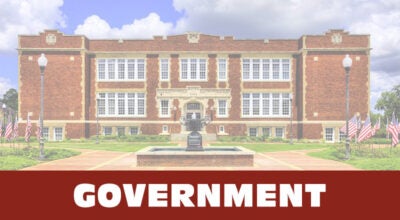FUNDS COULD HELP RESTORE TORTOISE HABITATS
Published 12:16 am Wednesday, December 16, 2015
Some $3.7 million is available to agricultural producers willing to help restore and protect the habitat of gopher tortoises.
The money is available through the USDA’s Natural Resources Conservation Service jointly as part of the Working Lands for Wildlife, an innovative partnership that supports struggling landscapes and strengthens agricultural operations.
Patrick Rohling, NRCS conservationist, said the funding is part of the Environmental Quality Incentives Program.
Rohling said that those who sign up now will be put on the list for fiscal year 2017 money.
“Gopher tortoises are native to Covington County, and Covington County is the hub for gophers,” he said. “Anyone with very sandy soil who notices large burrows – that’s typical of the gopher tortoise. Anyone with a pine landscape – that’s the kind of landscape we are looking for.”
Rohling said the longleaf pine ecosystem is in decline.
Local biologist Mark Bailey, Co-Author of “Turtles of Alabama,” said from a wildlife diversity standpoint, gopher tortoises are one of the most important wildlife species in our area.
“Their long, deep burrows provide shelter for so may other species of the original longleaf pine ecosystem that biologists call them a keystone species, meaning without them other forms of wildlife would decline and perhaps disappear,” he said. “There are species of beetle that occur only in gopher tortoise burrows. Rare indigo snakes, pine snakes and other reptiles overwinter in tortoise burrows.”
Bailey said that the extremely rare gopher frog uses tortoise burrows in summer.
“Bachman’s Sparrow, a small ground-dwelling songbird of the longleaf forest, will fly directly into a tortoise burrow when flushed rather than expose itself to avian predators,” Bailey said. “From an aesthetic standpoint, a lot of people enjoy seeing gopher tortoises and having them on their land. They fed many of our ancestors during the Great Depression and add variety to the outdoor experience today. They are also a window into the past. Almost all of the sandy uplands in our area were once open longleaf forest that teemed with gopher tortoises. Those forests are almost gone and so are most of the tortoises, but some continue to hang on here and there. Keeping them around just seems to many people to right thing to do.”
Ben Malone, NRCS state conservationist in Alabama, said that the decisions of ag producers can have significant impacts on wildlife.
“By managing land with the gopher tortoise and other wildlife in mind, producers can benefit entire populations while also strengthening their agricultural operation,” he said.
Since 2012, NRCS has worked with land managers to make conservation improvements to more than 278,000 acres of pine forests, benefiting the gopher tortoise and many other species.
“Working Lands for Wildlife helps land managers integrate wildlife-friendly measures into their working lands and also ensures they can keep those lands working,” Malone said.
For more information, call 334-222-3519, ext. 3 or visit the NRCS office in the Covington County USDA Service Center on Hwy. 55.





